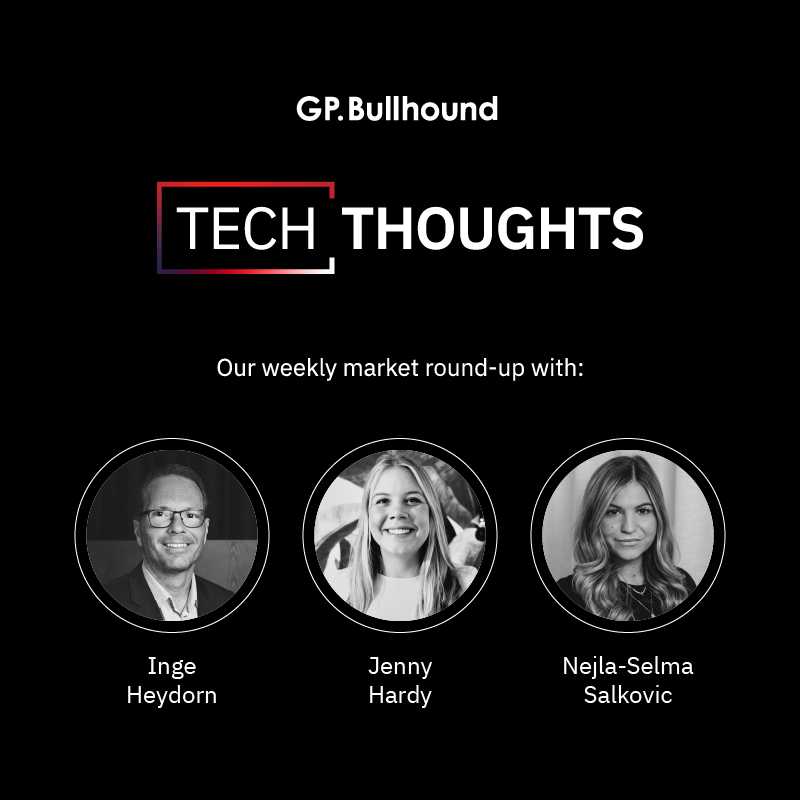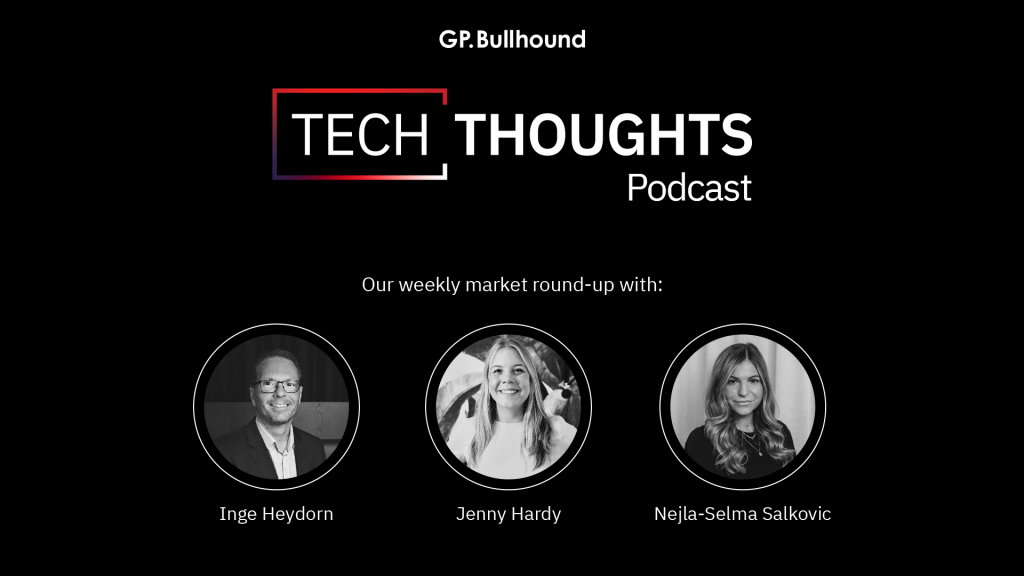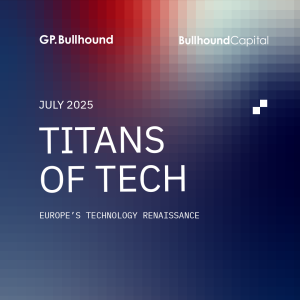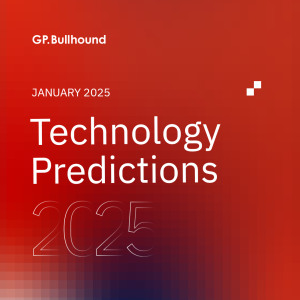Tech Thoughts Newsletter – 30 June 2023.

Market: There’s still volatility in the market, not unexpected in the last trading week of the quarter. Companies are generally in quiet-period ahead of reporting season which kicks off in a couple of weeks, so limited news flow.
Portfolio: We made no major changes to the portfolio this week.
China semis restrictions were back in focus this week, with an article in the Wall Street Journal reporting that the US Commerce Department were considering new restrictions on exports of AI chips by Nvidia and other chip makers to China. If we do a quick summary of the recent history in the latest semis restrictions:
At the end of August 2022, Nvidia put out an SEC filing stating that the US government was restricting sales of high performance AI chips for servers – specifically the A100 and the H100 to China and Russia. At the time it outlined that it expected a $400m hit to revenue in that current quarter from the new export restrictions. The US department of Commerce released its broader set of restrictions on October 7th. This specified the following:
Integrated circuits that have or are programmable to have an aggregate bidirectional transfer rate over all inputs and outputs of 600 Gbyte/s or more to or from integrated circuits other than volatile memories.”
The A100 chips Nvidia sells have an interconnect speed of 600gb/s, and the H100 chips 900 gb/s, so both were included in the restrictions. By focusing on the memory interconnects, it means they effectively can’t scale by adding more chips to get the same performance – it slows the speed at which you can move data into and out of the chip, which is very important when training AI models in data centers. So it is a very effective and well thought out way of limiting China’s AI industry. There’s no arguing that the US administration has done their research (a contrast here to the Trump trade-war/trade-peace scattergun approach back in 2019/2020).
In response, in November, Nvidia brought out its A800 chip with an interconnect speed of 400GB/s, and the H800 with a 300gb/s interconnect, to sell specifically into the Chinese market. At the time it wasn’t completely clear that the US government would support Nvidia’s workaround or be particularly happy with it, despite it meeting the restrictions (was it really still in the spirit of the rules?). Jensen Huang said this on the November 2022 conference call:
A800, the hardware, the hardware of A800 ensures that it always meets U.S. government’s clear test for export control. And it cannot be customer reprogrammed or application reprogrammed to exceed it. It is hardware limited. It is in the hardware that determines A800’s capabilities. And so, it meets the clear test in letter and in spirit.”
We also know these “slowed down” chips are being ordered in large quantities and used at Chinese tech firms. This from Tencent’s call last month:
And in terms of infrastructure, it’s a core strength for us, given our cloud business. And we have also recently, as Pony mentioned, announced our high-performance computing cluster based on NVIDIA H800 GPUs. And so that would actually give us an additional efficiency in terms of the training.”
And it’s been reported that TikTok parent Bytedance has ordered $1bn of A800/H800 chips.
So what now? So far, we only have the WSJ article that the US “is considering new restrictions” – we don’t know what the restrictions might detail – interconnect limits coming down further? A limit around the manufacturing process technology/geometries (Nvidia H800 chips are made on TSMC’s 5/4nm process)?
Portfolio view: we own Nvidia, which is the stock which would see the most impact from any increased restrictions (we own AMD too which gets caught up in the restrictions newsflow but which in reality has very minimal sales into China). Some thoughts from us:
- While Nvidia talked about a $400m impact in the quarter it was introduced last year (it does not disclose China data centre sales), we imagine China data centre sales have increased with the broader market and are in the range of 10% of the total. However, as we’ve noted before, we believe the 5nm capacity at TSMC is constrained, and therefore if they were restricted from selling completely, that short term demand would be filled with H100 demand from outside China.
- Nvidia’s CFO made comments on Wednesday that it does not see any material impact in the near term from restrictions, which does imply that supply could be shifted.
- It’s hard to pick apart political motivations (especially leading up to an election year) but we’d note some of the following around US/China:
- The restrictions so far (around semis, around semi cap) have been very thoughtful and sophisticated from the US government. In a way that implies they’re trying to be very precise about the technologies they’re going after and in a way that implies they don’t want to hamstring their own semiconductor companies, which have China as a key end market
- The reality of the semicap restrictions were much less harsh than had originally been assumed by the companies (much more tools have been able to get through to China)
- There isn’t much sense in delaying the introduction of restrictions given once China has the chips it can do what it likes with them – so the WSJ article comment that the US would wait after Janet Yellen’s visit to China “to avoid angering Beijing” seems odd.. We suspect if they weren’t before, Chinese customers have spent this week rush ordering as many A800/H800 chips as they can.
- We haven’t altered our position on the news this week.
On to other news flow:
An Nvidia partnership on every enterprise software company’s wish list!!
- The goal of every single enterprise software company this year must be to announce a partnership with Nvidia. And bonus points if you get Jensen Huang to join your capital markets day – so a win for Snowflake (not owned).
- The partnership means that Snowflake customers can use their own proprietary data to build and train custom generative AI models on Nvidia’s compute engine using its NeMo platform.
- It’s something we’ve debated a lot – how many AI models will there be? Will individual enterprises build their own models? Does it make sense to do that? We still think a lot of these questions are unclear.
- But for sure there are reasons to be believe that differently sized (ie. also smaller) pre trained models using different specialised proprietary data seems to make sense – the idea that you can take your customer contact data, or your supply chain data, and ask it questions in normal human language like “why are my customers churning?”.
- Jensen as always full of great bullish quotes: “this is the easiest application to use in the history of computing.. This is the best thing ever.. Frank and I will help you turn your data into intelligence… Nvidia GPUs are the most expensive, but if you put a workload on it, we do it so fast, it’s as if you got a 90% discount.. We’re the most expensive instance but the most cost effective TCO. If your job is to run workloads the best way to do it is acceleration… accelerate every workload you can”
- A win for Microsoft too as Snowflake announced a new Microsoft Azure partnership, making a large commitment in Azure consumption credits (potentially up to $1bn). It validates to an extent the share gains we think Microsoft is making vs Amazon in the cloud, thanks largely to its OpenAI integrations.
Portfolio view: more evidence that Nvidia (owned) is as it stands the de facto industry standard in AI right now, and that adopting AI via existing enterprise software businesses (like Snowflake) makes sense. Also striking that Nvidia announcing enterprise partnerships is a new norm now – we remember less than a year ago at Nvidia’s GTC finding it strange how the “One last thing” from Nvidia was a partnership with Deloitte (rather than the hot new gaming product) – how times change!
Snowflake continues to be on a radar though we remain somewhat cautious around consumption business models which haven’t been through a spend adjustment cycles yet, and still high EV/Sales valuations..
Micron (not owned) management calling the bottom of the memory cycle
- While it “beat” heavily reduced expectations, there’s no getting away from Micron’s headlines numbers being weak – nothing new – continuing the trend of the last several quarters. Q3 revenues were down 57% yr/yr and gross margin was negative 16% all driven by negative pricing, inventory write downs and underutilisation charges.
- Management did their best to convince investors we’re finally at a bottom in the memory markey: “We believe that the memory industry has passed its trough in revenue, and we expect margins to improve as industry supply-demand balance is gradually restored”.
- There is hope that AI demand (which we know is hugely memory and storage intensive) should drive a stabilisation of pricing but we’re not really seeing it yet.
- We agree AI is more memory intensive (we think an AI training server has twice the DRAM content of a traditional enterprise server), BUT there’s no avoiding the fact that even now down to 3 players, memory is still an inherently commoditised and bad industry.
- Micron cut capex expectations significantly through last year in an attempt to moderate industry supply and stabilise pricing. They say next year could see an even lower level of equipment spend.
Portfolio view: this memory downturn is the worst the market has seen in over 10 years. While much of this is the result of extraordinary circumstances (pandemic, inflation), some of it is also the nature of the industry – we don’t own any memory players in the portfolio as the commoditised nature and reliance on each player staying rational on supply means that for us it doesn’t match with our sustainable return on invested capital process.
Limited new news on capex for our semicap equipment exposure (LAM research particularly memory-spend exposed) – we continue to expect a relatively weak year for memory spend but we increasingly think there’s upside risk of a stabilisation of DRAM spend helped by the AI build out
The commentary around a bottoming of the inventory correction and the cycle is a clear positive for the broader semis industry – that will be key when we start to see the calendar Q2 reporting next month. Things might not be getting better, but hopefully they’ve stopped getting worse…
Samsung Foundry Forum: the tech leadership race is on
- Samsung (not owned) held their Foundry Forum where they reiterated their commitment to the leading edge
- It reiterated that it expects to move to 2nm for mass production in 2025 (for smartphone) and plans to move to more advanced 1.4nm in 2027.
Portfolio view: we don’t own Samsung (see comments above on our view on the memory industry) – but Samsung does account for ~25% of ASML’s sales.
Samsung is already using EUV in their processes and they have been running 3nm since Summer 2022. While the headline “3nm since summer 2022” suggest Samsung is ahead, there has been no secret in the industry that Samsung has been struggling with the yield with the 3nm process. At 2nm we expect contacts and vias to move to High NA, and possibly metal layers.
The tech leadership race (between TSMC, Intel and Samsung – and we wrote last week on Intel) is a significant driver of semicap equipment spend (particularly ASML at leading edge logic).
Signs of life in the Chinese smartphone market…
- In a statement from the China Academy of Information and Communications Technology, smartphone shipments rose 22.6% in May to 25.2m handsets, ahead of the country’s shopping festival, 6.18.
- The domestic smartphone market in China has been in dire straits for over a year, with both economic concerns and a very prolonged inventory correction.
Portfolio view: we continue to avoid direct exposure to the PC and smartphone market – though we recognise we may be through the trough of the broader inventory issues.
… And US Gaming market very much alive and kicking..
- The U.S. video game market finally saw some positive yr/yr growth in May.
- Consumer spending on video game content, hardware, and accessories totalled $4.1 billion, +12% yr/yr. Growth in spending was observed across all categories, including Content, Hardware, and Accessories.
- Specifically, spending on video game content grew by 9% in May, reaching $3.6 billion. Console full game and add-on content saw a significant increase of 58% compared to May 2022, which made up for declines in the Mobile and PC sectors.
- May 2023 also witnessed the highest spending on new physical video game software since May 2014. That’s a strange statement to make in a sector that’s spent the last few years shifting to digital (a bit like music) – it’s a Nintendo phenomenon (they have retained a higher physical business), and speaks to their dominance in the month:
- The best-selling game of May 2023 was Nintendo’s The Legend of Zelda: Tears of the Kingdom. Despite only including physical sales from Nintendo, the game instantly became the second best-selling title of the year so far. The Legend of Zelda: Breath of the Wild made a comeback in the top 20 monthly chart in May, securing the 13th position after ranking 28th in April. Full house for Nintendo as its Switch console topped the hardware chart too.
Portfolio view: We own Nintendo and Sony in the gaming space, and overall, May 2023 data gives some reassurance that, despite a prolonged COVID hangover for the gaming market, it’s still very much alive.

For weekly insights on the latest market updates, please subscribe to our Tech Thoughts podcast.
For more information about the latest trends and forecasts, please visit our official Tech Thoughts page.
We provide investors with access to category leading technology companies, globally. Our assets under management have a total value of more than $1bn, and our limited partners include institutions, family offices and entrepreneurs. Learn more about our funds here.
Enquiries
For enquiries, please contact:
Inge Heydorn, Partner, at inge.heydorn@gpbullhound.com
Jenny Hardy, Portfolio Manager, at jenny.hardy@gpbullhound.com
Nejla-Selma Salkovic, Analyst, at nejla-selma.salkovic@gpbullhound.com
About GP Bullhound
GP Bullhound is a leading technology advisory and investment firm, providing transaction advice and capital to the world’s best entrepreneurs and founders. Founded in 1999 in London and Menlo Park, the firm today has 14 offices spanning Europe, the US and Asia. For more information, please visit www.gpbullhound.com.



